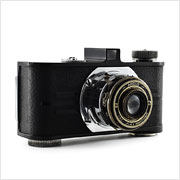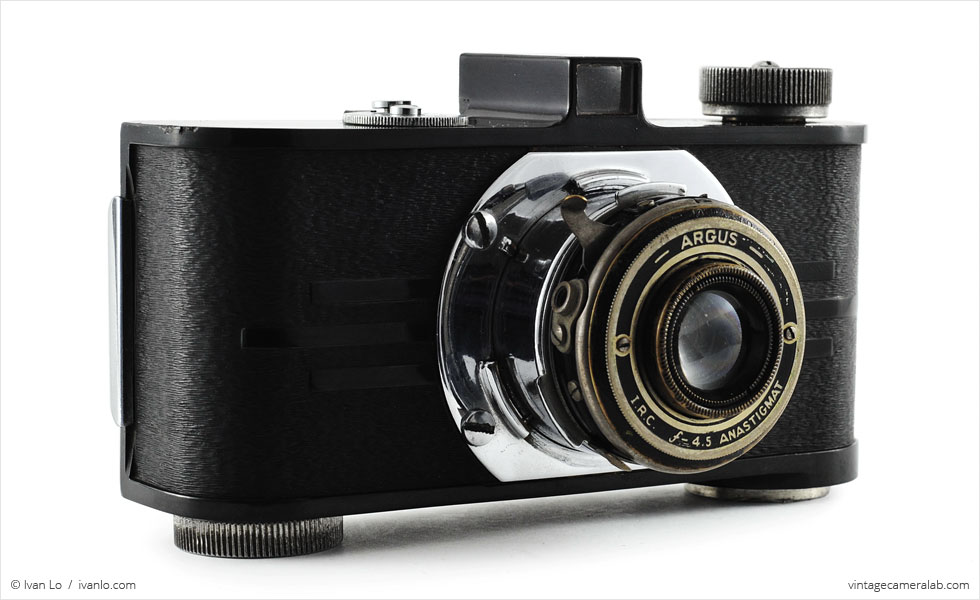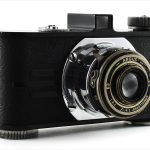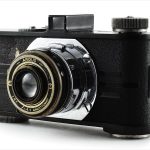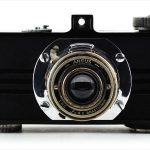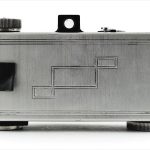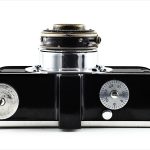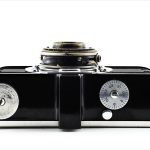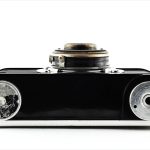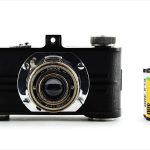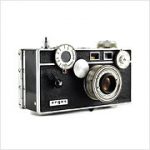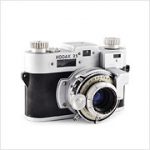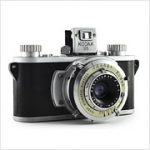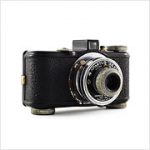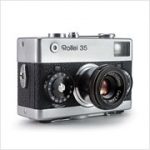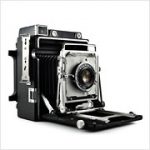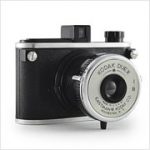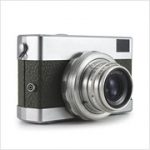Argus A Specifications
| Manufacturer: | International Research Corp. |
| Origin: | USA |
| Made in: | Ann Arbor, MI, USA |
| Introduced: | 1936 |
| Type: | Viewfinder |
| Format: | 135 Film |
| Dimensions: | 13 x 7.6 x 5.4 cm (closed) |
| 13 x 7.6 x 6.6 cm (open) |
Argus A Overview
The Argus A is a simple viewfinder camera introduced by Argus in 1936 that played a significant role in popularizing the use of 35mm film in the United States. Although it was already gaining traction in the United States thanks to Kodak and their Retina series of cameras, it took the Argus A’s relative affordability at $12.50 (about $220 in today’s money) to truly bring 35mm film to the masses, sparking a dramatic change in the landscape of consumer photography in America as well as the rest of the world.
In sharp contrast its younger brother, the blocky and awkwardly proportioned C3, the Argus A’s Bakelite body has graceful lines and a handsome design that have spawned dozens of imitators throughout the decades, most notably the Kodak 35 which the Argus embarrassed in sales. The most important part of the A is its lens: a 50mm f/4.5 Anastigmat lens with I.R.C. branding since Argus Inc. was initially named the International Research Corporation. Although the lens has a fixed focus on this particular model, focusable lenses can be found on later versions of the Argus A. The front ring of the lens (with the branding stamped on it) can be rotated to select the shutter speed by lining up the desired speed (1/25, 1/50, 1/100, 1/200, Bulb, and Time, all of which are barely visible) with the black notch at the 12 o’clock mark. Further back on the lens barrel is the shutter lever, threaded remote cable socket, and aperture selector whose etched numbers are also barely visible. The spring-loaded lens automatically telescopes when the three metal tabs on the lens barrel are rotated free. When not in use, the lens can be pushed back into the body with those same metal tabs locking it into place.
A rudimentary viewfinder can be found in the middle of the camera’s top plate with a frame counter and film advance release switch on one side and a film advance knob on the other. On the bottom plate is the film rewind knob and a reinforced tripod socket. The stainless steel back of the Argus A features a stylish, Art Deco inspired design along with a leather tab to help users remove the back of the camera for loading and unloading film.
My wife purchased this camera when she was attending university and, after she graduated, was put into storage where it stayed for years until we rediscovered and rescued it. The camera is in remarkable shape for its age and still functions perfectly. The spring for the telescoping lens still has a surprising amount of tension in it and the Bakelite body is pretty much scratch-free. In fact, the only really noticeable wear is the loss of paint on the back plate’s design, some minor damage to the film advance and rewind knobs, and normal wear and tear on the brass lens rings which make the annoyingly invisible shutter speed markings even harder to read.
Find your very own Argus A on eBay.
McKeown, James M. and Joan C. McKeown’s Price Guide to Antique and Classic Cameras, 2001-2002. (Grantsburg, WI, USA: Centennial Photo Service, 2001), p 63.
